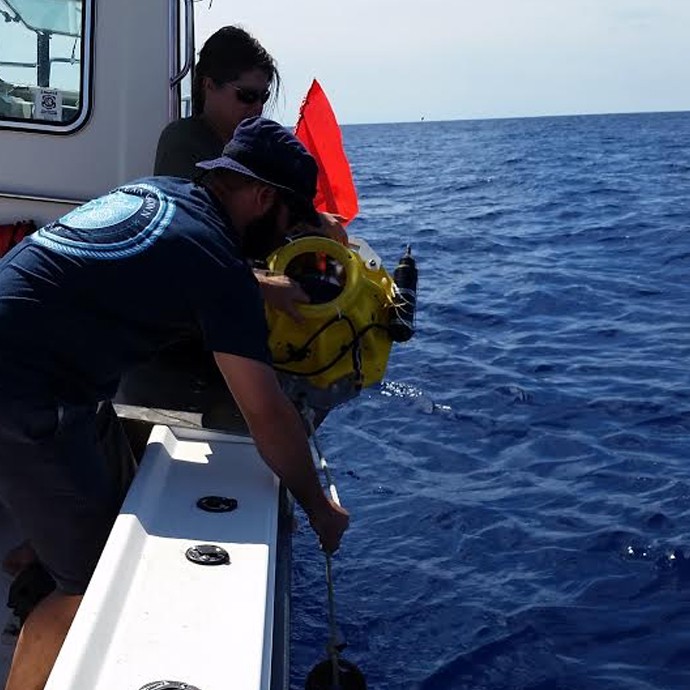In October, AOML scientists, technicians and engineers involved in the Western Boundary Time Series (WBTS) project completed the 100th successful dropsonde cruise in the Florida Current since the project’s inception in 2000. The dropsonde cruises measure volume transport in the Florida Current using an out-of-service telephone cable between Florida and Grand Bahama Island. The oceanographic dropsonde is a key instrument in taking these measurements and has been used since the 1960s. The modern version was pioneered at AOML in the mid-1990s via the introduction of a Global Positioning System (GPS) receiver inside the instrument. Further improvements over the years have led to a very robust dropsonde that provides highly accurate estimates of depth-averaged ocean velocity. Collecting 100 dropsonde cruises over the past 15 years is an important milestone for the WBTS project and has been an effort of many, from the engineers who build the dropsondes, to the technicians who process the data, to the numerous engineers and technicians who go to sea to collect the data on small boats every year.

Photo credit: NOAA